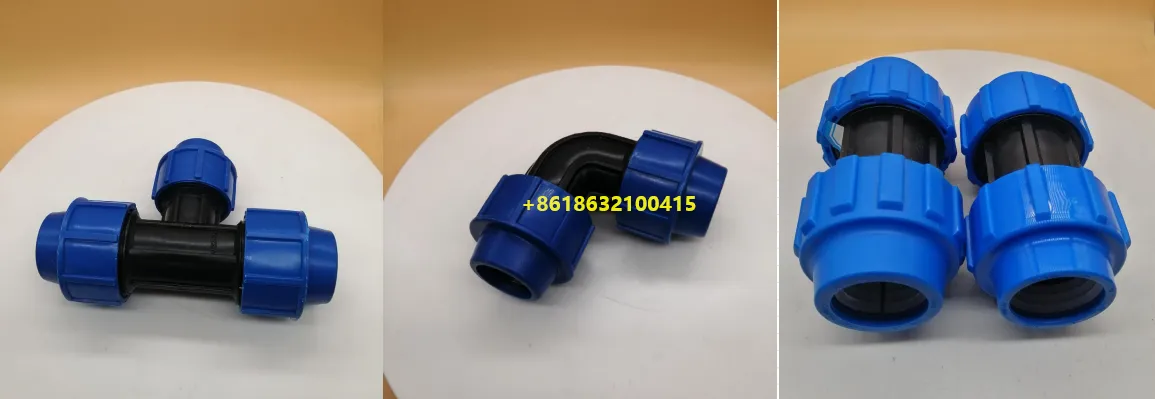Dec . 29, 2024 09:59 Back to list
pvc to hdpe connection products
PVC to HDPE Connection Products A Comprehensive Overview
As the construction and manufacturing sectors evolve, the use of different types of piping materials has become increasingly widespread. Among these materials, PVC (Polyvinyl Chloride) and HDPE (High-Density Polyethylene) hold a prominent position due to their unique properties and advantages. The need for efficient connections between these two types of pipes has led to the development of various connection products. In this article, we will explore the characteristics of PVC and HDPE, the necessity of connecting these two materials, and the products available for achieving seamless connections.
Understanding PVC and HDPE
PVC is a versatile plastic commonly used in a wide range of applications, from plumbing to electrical conduits. It is well known for its durability, resistance to corrosion, and affordability. PVC pipes are lightweight, easy to install, and available in various diameters, making them a popular choice for residential and commercial plumbing systems.
On the other hand, HDPE is renowned for its strength and flexibility. Often used for applications requiring high resistance to impact and chemicals, HDPE pipes are ideal for underground installations and large-scale water distribution systems. Its ability to withstand extreme pressure and its longevity make it an attractive option for many developers and engineers.
The Need for PVC to HDPE Connections
While PVC and HDPE pipes serve distinct purposes, there are instances where they need to be connected. For example, a project may require the use of HDPE for underground water distribution due to its robustness, while PVC may be preferred for above-ground applications due to its cost-effectiveness. The ability to connect these two materials allows for a more flexible and efficient design, catering to the specific needs of a project.
However, connecting PVC and HDPE can present challenges. The physical properties of these materials differ significantly, leading to potential compatibility issues. For instance, while PVC typically employs solvent cement for jointing, HDPE requires heat fusion techniques. Therefore, specialized connection products are essential for ensuring a secure and leak-free connection between the two materials.
Connection Products for PVC and HDPE
pvc to hdpe connection products

Several connection products have been developed to facilitate the joining of PVC and HDPE pipes. Here are some of the most common solutions
1. Mechanical Couplings These devices consist of two halves that clamp around the joining pipe ends. They often feature rubber gaskets or O-rings to ensure a tight seal, accommodating the slight discrepancies in the diameters of different pipes. Mechanical couplings are easy to install and do not require specialized tools or complicated techniques.
2. Transition Fittings Transition fittings are specifically designed to connect pipes of different materials. These fittings allow for a smooth transition between PVC and HDPE, typically featuring a PVC hub on one end and an HDPE socket on the other. These fittings are crucial for maintaining the integrity of the pipe system and preventing leaks.
3. Flanged Connections For larger diameter pipes or where frequent disassembly is required, flanged connections can be beneficial. A flanged connection utilizes bolted flanges on both ends of the pipes, enabling easy assembly and disassembly as needed. This type of connection is particularly useful in industrial applications.
4. Adapters and Reducers In scenarios where the pipe diameters differ, adapters and reducers are used to allow a seamless transition. These fittings ensure a proper fit and maintain flow efficiency across different pipe sizes and materials.
5. Compression Fittings These fittings are versatile and can be used to connect pipes of various materials without the need for soldering or bonding agents. Compression fittings work by mechanically tightening around the pipe, creating a secure connection.
Conclusion
As the demand for diverse piping solutions continues to rise, the importance of connecting different materials like PVC and HDPE cannot be understated. With a variety of connection products available, including mechanical couplings, transition fittings, flanged connections, adapters, and compression fittings, engineers and contractors can ensure efficient and reliable installations. Understanding the properties of PVC and HDPE, along with the available connection options, enables professionals to design more robust and flexible piping systems that maximize performance while minimizing overall costs. The ability to connect these two materials opens a world of possibilities in various applications, paving the way for innovation and sustainability in the industry.
-
Durable UPVC Column Pipes for Submersible Pumps | Efficient Water Flow
NewsAug.14,2025
-
DN100 PVC Well Casing Pipes - Durable & Corrosion-Resistant
NewsAug.13,2025
-
Flexible 32mm HDPE Pipes in Coil | Durable Water & Gas Lines
NewsAug.12,2025
-
DN50 HDPE Pipes in Coils: Flexible, Durable & Easy Install
NewsAug.11,2025
-
32mm HDPE Pipes in Coil: Durable, Flexible, Easy Install
NewsAug.10,2025
-
140mm PVC Drilling Pipe: Durable & Efficient Well Casings
NewsAug.09,2025

